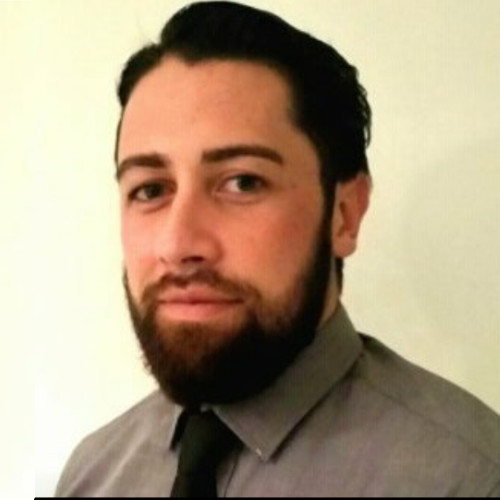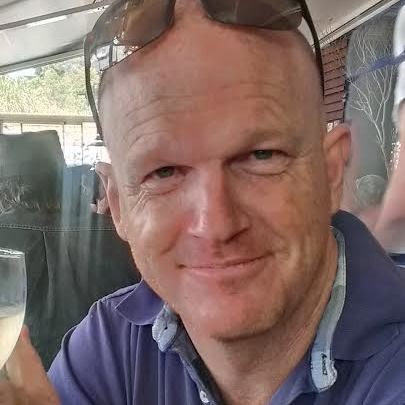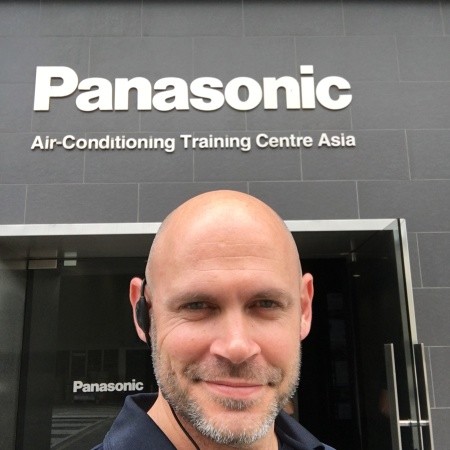Solving Problems Through New Product Development and Product Design for Brisbane
Great products solve real problems. That’s why every product journey should start with a deep understanding of the problem and its context. Whether the solution is straightforward or technically uncertain, we’re here to help navigate the path from concept to reality.
Some ideas have clear engineering paths. Others involve unknowns, trials, and experiments. Both are valid, but require different expectations around time, cost, and risk. Our team specializes in identifying the right approach early — whether that’s rapid prototyping, simulation, or scientific investigation — and adapting as we go.
Whether you’re seeking help with product design, industrial design, electronics, or embedded systems, our team can support you through all phases of development — from concept sketches and mood boards to working prototypes and full production.
Our Process
Every project is different, but most follow these core phases:
- Project Review: Define the product goals, target users, and key functions. We collaborate closely to understand your vision and refine any early concepts.
- Planning: Outline possible technical paths, draft a rough BOM, estimate unit costs, and propose a high-level plan. We keep planning lean so your idea can evolve.
- Design: Turn ideas into computer-aided designs (CAD) with a focus on cost-effective prototyping, product aesthetics, and functionality. We often support this with mood boards, industrial design refinement, and rapid iteration using modern 3D CAD tools.
- Prototyping: Build physical or digital prototypes for testing and feedback. We often recommend multiple iterations to ensure your product is ready for market or investors.
- Production: Transition from prototype to manufacture-ready design. We assist with DFM reports, supplier quotes, and production planning.
- Promotion: Optionally, we can help you prepare promotional materials such as logos, renders, brochures, and videos.
In some cases, we may suggest an early feasibility study or proof-of-concept (PoC) build before formal development starts. This helps reduce technical and financial risk.
Funding Your New Product Development and Product Design for Brisbane
Development costs are typically one-off investments. They shift your breakeven point but don’t directly affect long-term profit. Focus instead on reducing unit (marginal) costs and ensuring your product has real demand.
If self-funding isn’t an option, here are some alternatives:
Government Grants
Equity Investment
Some founders self-fund an early prototype, then pitch to an industry-aligned investor for further support. This can lead to reimbursement of early costs, mentorship, and shared equity arrangements.
Other Sources
- Angel Investors: Often fund pre-revenue concepts
- Venture Capital: More common once traction is proven
- Crowdfunding: Platforms like Kickstarter allow pre-sales to fund development
Why Choose COLETEK for New Product Development and Product Design for Brisbane?
Our core team includes robotics engineers and PhD scientists with decades of combined experience. This lets us bridge disciplines and solve hard problems quickly — saving you time and cost versus siloed firms.
We work lean, embrace agility, and treat each project as a partnership. Whether you’re building a proof-of-concept (PoC), a commercial minimal viable product (MVP) or validating a high-risk idea, we tailor the process to suit your goals, budget, and stage.
We also offer a private client dashboard to keep your project organised, with timelines, file sharing, and chat in one place. It’s like your own project cockpit, purpose-built for hardware and product teams.
Tools, Capabilities & Examples
We bring together electronics, software, industrial design, and mechanical engineering under one roof. Our private dashboard ensures clear communication throughout your journey, while our capabilities and portfolio showcase our technical depth and product range.
Our Engagement Model
- Time and Materials basis (hourly + materials)
- No guarantees – we work on a best-effort R&D model
- Weekly billing with itemised timesheets
- 15-minute billing increments
- 7-day invoice terms or deposit-based
Next Steps
Ready to begin? Contact us with your concept or goals, and we’ll guide you through the review phase to identify the right development approach for your idea.
Explore Related Services
New Product Development and Product Design for Brisbane often draws on several of our specialised service areas. Depending on your project's scope, you may also be interested in:
- Electronics Design – Custom PCB design, component selection, and circuit prototyping.
- Software and Firmware Development – Backend, frontend, bare-metal and app development to support your product ecosystem.
- 3D Computer-aided Modeling (CAD) – Concept visualisation, enclosure design, and mechanical integration.
- Rapid 3D Prototyping – Fast-turnaround 3D printing and CNC machining or vacuum casting for test-fit, enclosures, PoCs and MVPs.
- Embedded Systems – Firmware development, microcontroller programming, and system integration.
- IoT & Edge-AI Systems – IoT & Edge-AI system design and development for data logging, control, and cloud integration.
- Robotics Prototyping – Autonomous systems, mobility solutions, and field-ready mechatronics.
- Artificial Intelligence – Vision systems, language systems, predictive models, and intelligent automation for smarter products.
Engineering Innovation for Prosperous Businesses in Brisbane, Queensland, Australia
Certificate of Compliance and Energy Efficiency (COOLET) experts at COLETEK have been empowering businesses throughout Queensland, including the thriving city of Brisbane, since 2001. As a multidisciplinary Australian engineering and product development company, we're proud to serve as trusted advisors for local entrepreneurs and established companies alike.
Based in Brisbane, Queensland, Australia, our team is uniquely positioned to understand the distinct challenges and opportunities facing businesses in this region. We've built long-lasting relationships with clients across various industries by demonstrating reliability, fostering collaboration, and showcasing our capability to deliver innovative solutions that drive success.
At COLETEK, we're passionate about enabling businesses in Brisbane, Queensland, Australia to navigate the complexities of product development, streamline their operations, and remain competitive in an ever-evolving market. Our comprehensive approach ensures that every project, no matter its scope or scale, is approached with the same level of dedication, creativity, and expertise.
As a national company with local roots in Brisbane, Queensland, Australia, we're committed to supporting businesses across this great city and beyond. We believe that by working closely together, we can co-create innovative products and services that drive growth, improve efficiency, and enhance customer experiences.
If you're looking for a trusted partner to help accelerate your product development journey in Brisbane, Queensland, Australia or further afield, look no further than COLETEK. Our team is eager to bring its collective expertise to bear on your project, providing tailored solutions that meet your unique needs and objectives.
Let’s build something remarkable together.
Contact UsNew Product Development and Product Design for Brisbane – Our Clients: Big Brands & Small Businesses































































































New Product Development and Product Design for Brisbane – Amazing Customer Testimonials
Luke and the team do a amazing job. Extremly happy from start to finish
I consulted COLETEK for some work, commencing in 2014, and haven’t looked back. The project was very important to me, and COLETEK not only saw that but exuded sincere enthusiasm about the project; they are attentive, and thorough in their research and development service. They are a wealth of information and advice, for many aspects of the entire engineering and commercialization space, and this has been invaluable to me. I look forward to continuing work with them long into the future!

In the development of our new product Smart Syphon we had a tight deadline to launch the commercial version of our product and experienced some issues with our drawings. Luke and his team dealt with the issues, worked through the week-end and delivered a quality outcome on time.

We used COLETEK on a small project involving mechanical and electronic design aspects as well as software development. COLETEK understood our requirements at the outset and worked to accommodate our needs. The whole process was professionally conducted and we highly recommend COLETEK

I consulted COLETEK for some work, commencing in 2014, and haven’t looked back. The project was very important to me, and COLETEK not only saw that but exuded sincere enthusiasm about the project; they are attentive, and thorough in their research and development service. They are a wealth of information and advice, for many aspects of the entire engineering and commercialization space, and this has been invaluable to me. I look forward to continuing work with them long into the future!

We engaged COLETEK to conduct a series of research projects on robotics and we very pleased with their technical skill, creative thinking and hard work. If you need to prototype a complex technical idea, they are a great partner to work with.

In the development of our new product Smart Syphon we had a tight deadline to launch the commercial version of our product and experienced some issues with our drawings. Luke and his team dealt with the issues, worked through the week-end and delivered a quality outcome on time.

We engaged COLETEK to conduct a series of research projects on robotics and we very pleased with their technical skill, creative thinking and hard work. If you need to prototype a complex technical idea, they are a great partner to work with.

After approaching COLETEK with a few sketches of a plumbing tool I had in mind Luke and I immediately bounced a few ideas around. Leaving things with Luke he quickly produced some 3D images and ideas we subsequently used. Before long COLETEK produced an operational 3D printed prototype of the tool. I was then able to use this prototype to seek funding for further research and development.

We met with Luke Cole from COLETEK and very quickly realised that he was very knowledgeable in robotics and prototyping. What separates his company from the rest, is that he had a unique value proposition - COLETEK offers a tele-operated / robotic unit for rent and with the flexibility to be modified to build proof-of-concepts. That unit lowered both the cost and time for us to produce a video showing a very challenging concept. In general COLETEK's service was great value. We would recommend them - they will get it done.

I would thoroughly recommend COLETEK they provided me with excellent feedback and engineering knowledge with regards to our idea. They also have continued to help us with what direction we should take and introduced us to other professionals that have also guided us. I suggest anyone who has been thinking of something they would like to pursue should contact them to get the most realistic approach of making it successful.
COLETEK has assisted on a variety of last-minute 3d printing overflow tasks for various projects. I've always found them to be very responsive to my needs and turned around urgent work in shortest possible time frame. I wouldn't hesitate to use or recommend COLETEK for any future design and/or 3d printing requirements.

Luke from COLETEK has assisted us on a number of occasions and has always been helpful, courteous and understanding of our needs. There was an instance when timing was of the essence and Luke was able to prioritise our job to ensure we weren't affecting our customers in a negative way. He is highly recommended.

Luke and the team do a amazing job. Extremly happy from start to finish
We met with Luke Cole from COLETEK and very quickly realised that he was very knowledgeable in robotics and prototyping. What separates his company from the rest, is that he had a unique value proposition - COLETEK offers a tele-operated / robotic unit for rent and with the flexibility to be modified to build proof-of-concepts. That unit lowered both the cost and time for us to produce a video showing a very challenging concept. In general COLETEK's service was great value. We would recommend them - they will get it done.

We worked with Luke from COLETEK to develop a prototype for a new venture. Luke was able to give us practical advice on how to execute the project inline with our budget that was super useful. What has been endearing, is that even after the build was complete, Luke continues to touch base with us offering help to keep the momentum of the project going forward.

I would thoroughly recommend COLETEK they provided me with excellent feedback and engineering knowledge with regards to our idea. They also have continued to help us with what direction we should take and introduced us to other professionals that have also guided us. I suggest anyone who has been thinking of something they would like to pursue should contact them to get the most realistic approach of making it successful.
Luke from COLETEK has assisted us on a number of occasions and has always been helpful, courteous and understanding of our needs. There was an instance when timing was of the essence and Luke was able to prioritise our job to ensure we weren't affecting our customers in a negative way. He is highly recommended.

Luke (COLETEK) did an amazing job helping me take an idea through technical design, proof of concept and prototype development. Luke immediately understood the requirements, delivered to a budget, within the required timeframe and the whole process was extremely professional. I highly recommend for any design and prototype work you can imagine.

We worked with Luke from COLETEK to develop a prototype for a new venture. Luke was able to give us practical advice on how to execute the project inline with our budget that was super useful. What has been endearing, is that even after the build was complete, Luke continues to touch base with us offering help to keep the momentum of the project going forward.

After approaching COLETEK with a few sketches of a plumbing tool I had in mind Luke and I immediately bounced a few ideas around. Leaving things with Luke he quickly produced some 3D images and ideas we subsequently used. Before long COLETEK produced an operational 3D printed prototype of the tool. I was then able to use this prototype to seek funding for further research and development.

COLETEK has assisted on a variety of last-minute 3d printing overflow tasks for various projects. I've always found them to be very responsive to my needs and turned around urgent work in shortest possible time frame. I wouldn't hesitate to use or recommend COLETEK for any future design and/or 3d printing requirements.

We used COLETEK on a small project involving mechanical and electronic design aspects as well as software development. COLETEK understood our requirements at the outset and worked to accommodate our needs. The whole process was professionally conducted and we highly recommend COLETEK


